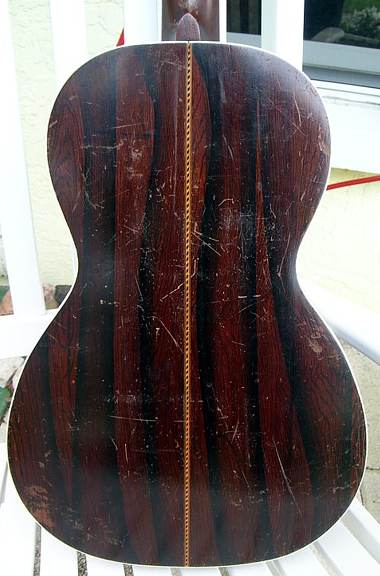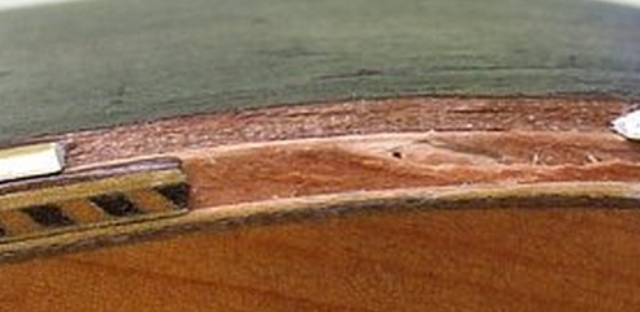
Well, here's my latest restoration project: an oldie but goodie no-name parlor. I explored the interior with a light and mirror. There are no markings anywhere inside or outside. It's a 24?-inch scale 12-fretter. The body measures 18? inches long and 12? inches wide across the lower bout.
(Click here for more pix)
Judging from interior/exterior grain lines it appears to be all solid woods. It's ladder braced and built unbelievably light. I think the top is two-piece bookmatched spruce. I'm not sure about the back and sides. Rosewood, I think, Brazilian, I hope. At first I thought it was a one-piece back, but I'm not not so sure but what it's two similar pieces not bookmatched. It has a heel cover matching the back. The finish is definitely French Polish.
It has some old, repaired cracks in the back one side. Looks like they were repaired using HHG a very long time ago. Don't know what the neck is, mahogany by the look of it.
My proposed restoration will consist of replacing the missing binding and purfling on one side of the lower bout. The top is loose there, too, so I'll wick in a little CA to secure it. Beyond that I think I'll just refurbish the French polish on the back and sides and leave the neck and wrinkled headstock finish as-is. Hey. I've got some wrinkles, too.
I don't think it's going to need a neck reset, although I'll string it up before doing any refinishing just to make sure.
Two questions for our cognoscenti:
1.) Anybody have any ideas about when this might have been made? And,
2.) Are these Brazilian back and sides, or what?
Any info or suggestions will be appreciated.






